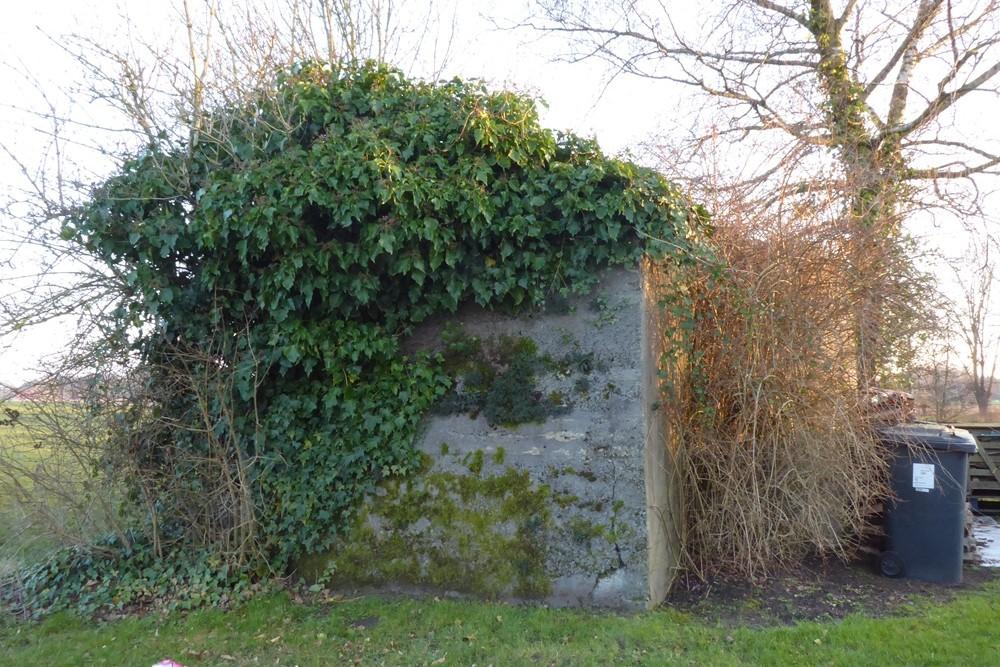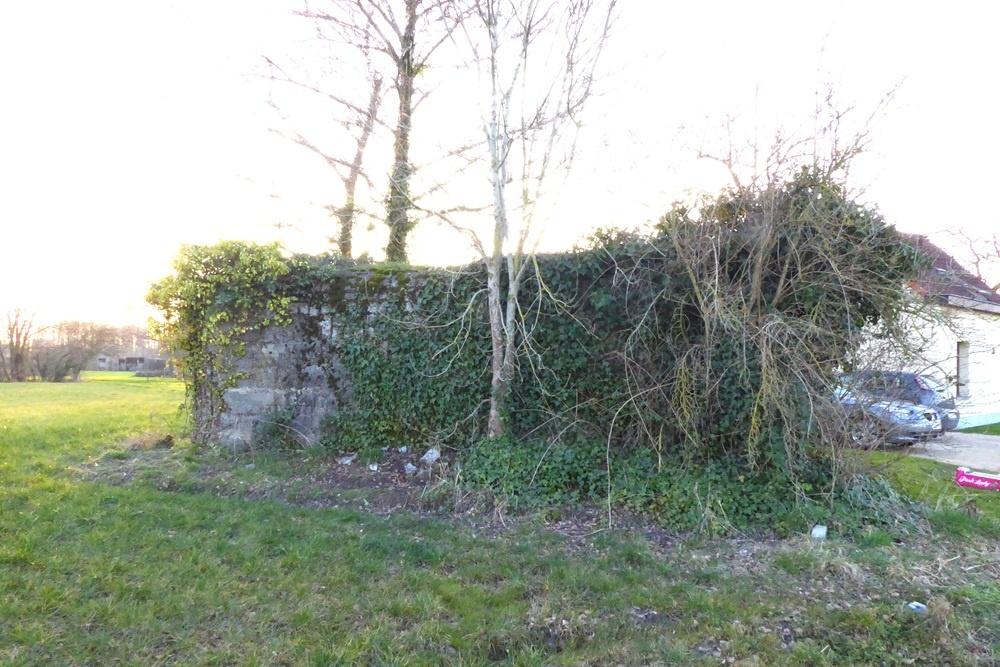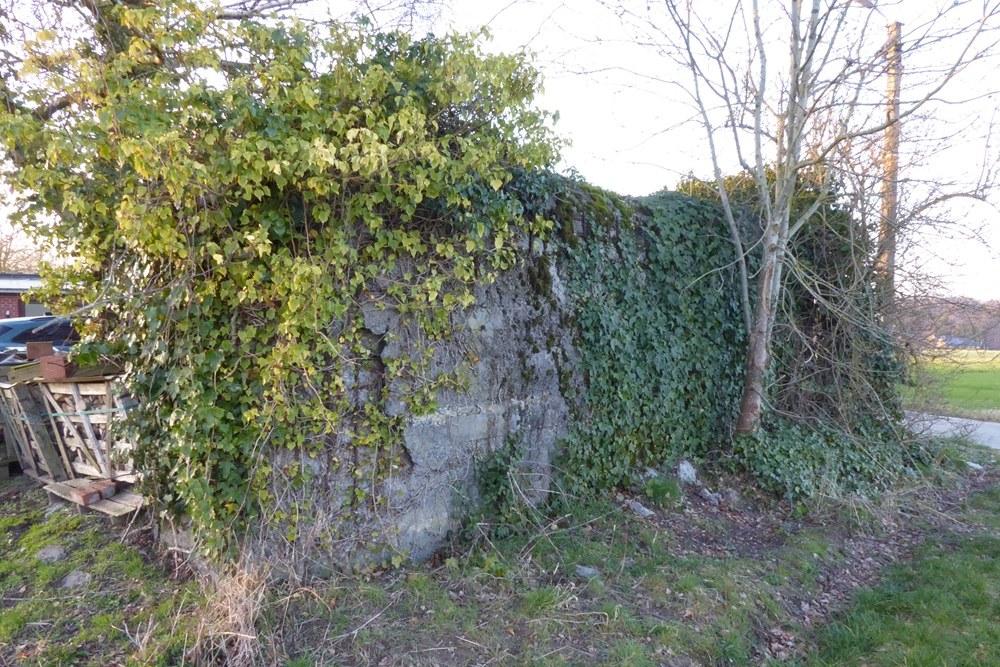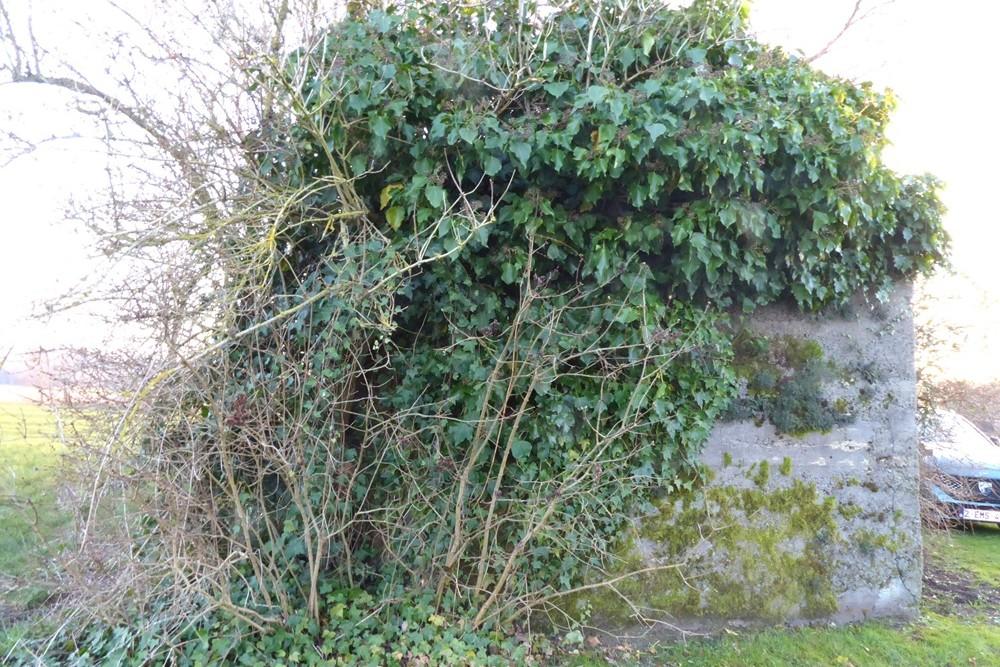Bunker Belt Bruggenhoofd Gent - Rear Line Bunker B37
Belgian bunker, part of the Ghent Bridgehead. This defensive position was constructed between 1934 and 1938, eight kilometres south of Ghent. Its construction was part of the fortification policy that Belgium pursued after the First World War.
The actual bridgehead consisted of two resistance nests – Betsberg and Muntekouter – and three strong points – Semmerzake, Eke and Astene.
The resistance nests and strong points were connected to each other by a curtain consisting of three defence lines.
On the territory of Landskouter there were three bunkers of the rear line behind Betsberg.
Bunker B37 was located between B36 and B38 and was placed at an angle with B36 in order to have a larger field of view and shooting range.
B37 looked like a brick outbuilding of a house. It was walled with brick and had a roof covering of red Boomse tiles. There were 2 false windows on the side.
The bunker consisted of one room and an airlock, which was provided for the installation of a Maxim machine gun but also for the installation of a Hotchkiss or Colt machine gun.
B37 is located on private property next to a house on the path Stuivenberg. Due to the vegetation, it is hardly visible that it is a bunker.
Extensive information about this bunker belt can be found on the site Bunkergordel Bruggenhoofd Gent. It also contains photos, plans and technical data of the bunkers. A map shows the locations per municipality.
Do you have more information about this location? Inform us!
Source
- Text: TracesOfWar
- Photos: Marie-Christine Vinck
Nearby
Museum
Point of interest
- Halve Maanroute – information board 4, Battle of Gijzenzele - Gijzenzele
- Peace Tree Gijzenzele - Gijzenzele
- Halve Maanroute – information board 6, Battle of Gijzenzele - Gijzenzele
Monument
- War Memorial Landskouter - Landskouter (Oosterzele)
- War Memorial Gijzenzele - Gijzenzele (Oosterzele)
- Commemorative Plate War Victims Gontrode - Gontrode (Merelbeke-Melle)
Cemetery
- Belgian Graves Veterans Landskouter - Landskouter (Oosterzele)
- Belgian Graves Veterans Gijzenzele - Gijzenzele (Oosterzele)
- Commonwealth War Grave Gijzenzele - Gijzenzele (Oosterzele)
Remembrance Stone
- Stumbling Stone Jacques Eggermontstraat 59 - Gent
- Stumbling Stone Kortrijksesteenweg 890 - Gent
- Stumbling Stone Monterreystraat 63 - Gent








